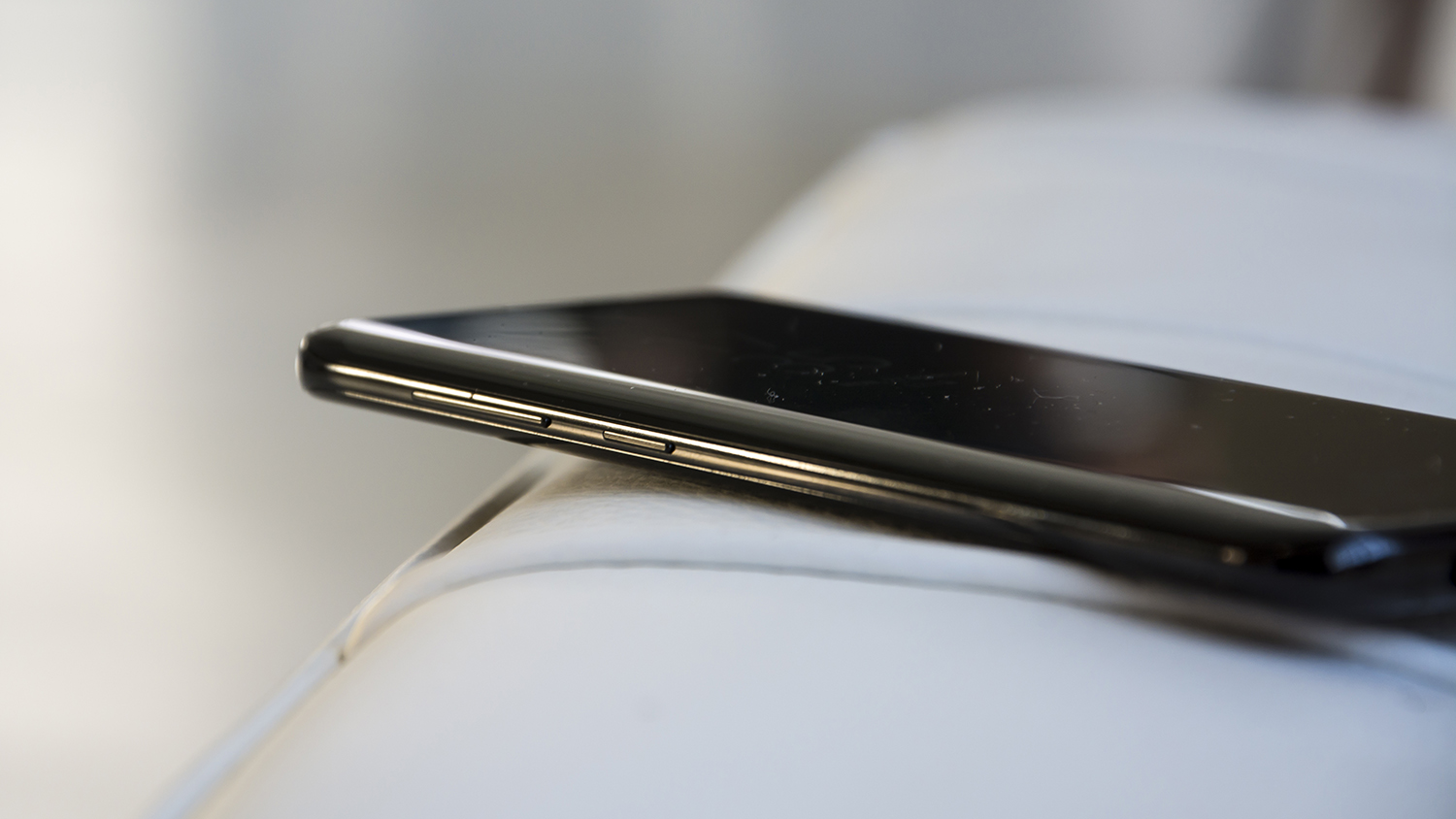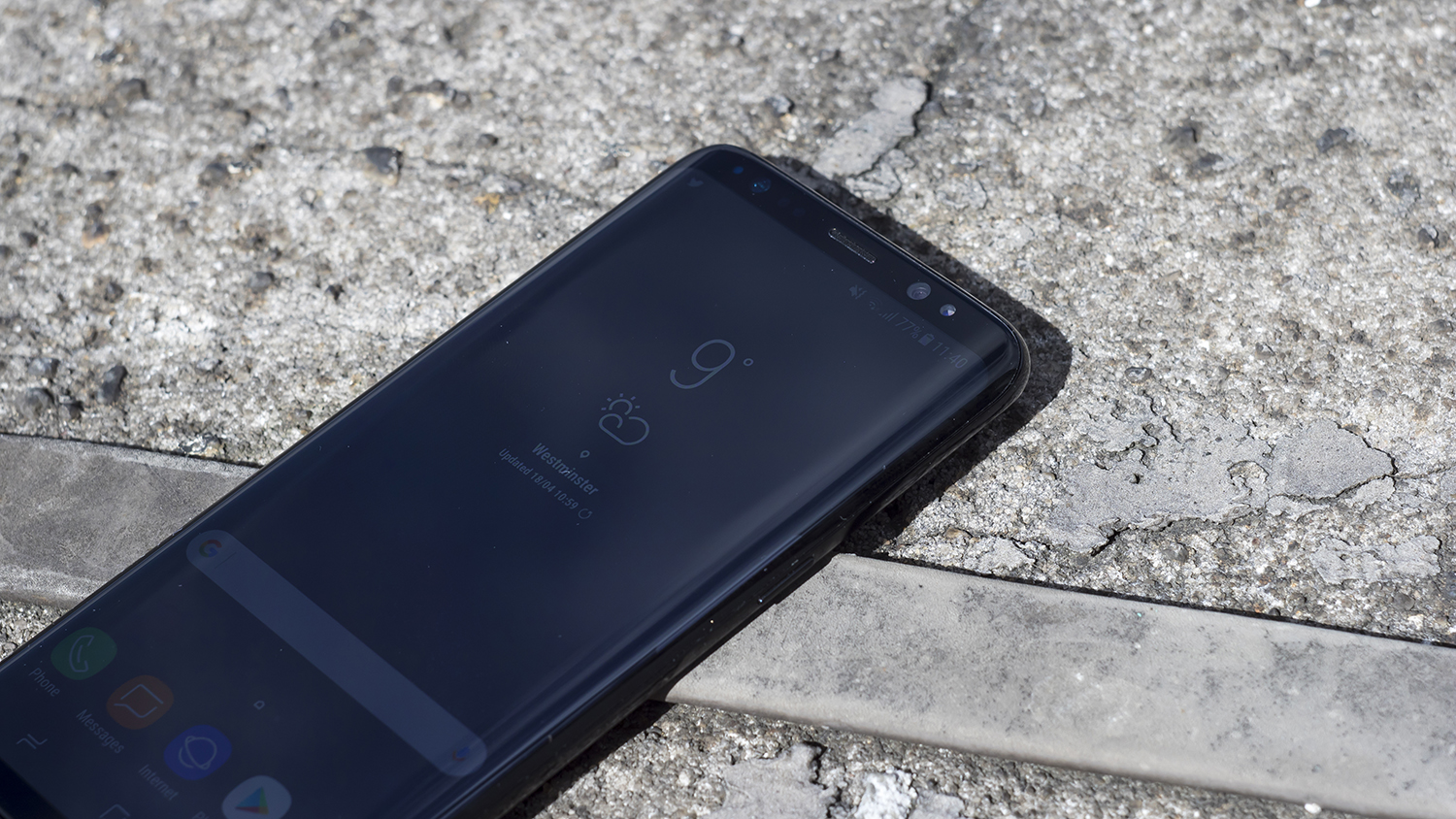Samsung Galaxy S8 review: A better option than the S9?
Despite its age, Samsung's S8 is still up there with the best of them
The Samsung Galaxy S8's appeal hasn't dimmed with age. It's still one of the most attractive and powerful phones out there, and even manages to match its successor in most categories. It's available for around £200 less too, making the Galaxy S8 a better-value option than the S9.
-
+
Spectacular display; Excellent camera; Stunning design; Killer speed
-
-
Expensive; Battery life isn't quite as impressive as predecessor
The Samsung Galaxy S9 may now be readily available (and let's be honest, it's a stunning device) but 2017's Samsung Galaxy S8 is definitely still worth a look if you're on more of a budget, with its price point significantly less than the brand spanking new flagship.
There may not be the same bells and whistles as this year's frontrunner, but with a sleek design, edge-to-edge display and great performance, it's certainly not a device to shy away from if you take the time to study its feature list. Don't have time? Simply read our review and you can make up your mind whether it's the right phone for you.
The Samsung Galaxy S8 marked a significant upgrade when placed side-by-side with 2016's Samsung Galaxy S7. It's not just the new larger display that turned our heads, but also its supercharged octacore processor and a top-performing camera (despite Samsung smartphones coming in behind Google's Pixel and Sony Xperia devices historically).
If you find yourself drawn to the latest Samsung Galaxy S9, but can't quite stomach the 615 (exc VAT) price tag, you'll be happy to hear that the Samsung Galaxy S8 is much more affordable at a smidge above 400 from Amazon (down from its list price of almost 700) - that's the same price as the majority of mid-range devices on the market, despite still most certainly being a flagship in most respects.
Samsung Galaxy S8 review: Design
By far its defining feature, the Galaxy S8's screen is a marvel. While it's still sporting Samsung's signature curved-edge display, the company has gone one step further and pushed the screen out to the very edges of the device, leaving only the faintest hint of a bezel at the top and bottom.
This eye-catching design has been followed by a wave of devices with identikit screens, including the iPhone X, OnePlus 5T and Honor 7X, but the Samsung Galaxy S8 was the first one to pull it off and to our eyes, still the best - particularly in concert with the curved display.

However, in order to accommodate this jumbo display, Samsung has had to ditch the idea of physical, or even capacitive, navigation buttons. Instead, they've been replaced by software-based back and recent apps buttons, and a home button embedded beneath the display. It simulates the feel of pressing a physical button with Force Touch-style haptic feedback, and it works extremely well. The fingerprint sensor has also been relocated to the rear of the device out of necessity.
Aside from the shiny new screen, the S8 is aesthetically very similar to its predecessors. It still features a glass back with Corning's Gorilla Glass 5 for added durability, with an aluminium frame banding the device itself. It's sleek curved look is still one of the most attractive around, and we've yet to see a phone match it for sheer style.
Samsung Galaxy S8 review: Display
As you'd expect from a Samsung phone, the display is pretty much perfect. Colour accuracy and contrast are both flawless, the QHD+ resolution is pin-sharp and the brightness is absolutely blazing (to the point where the maximum setting actually carries a health warning). In terms of visual fidelity, you'd be hard pressed to do better than the S8.
The use of an unusual 18.5:9 aspect ratio means the Galaxy S8 is taller and thinner than you'd expect, which makes it much more comfortable to hold and use one-handed. It also feels a lot smaller than it actually is - in a good way. It may be a 6in handset, but it actually feels more like a 5in device, easily fitting into your pocket. It also feels a lot slimmer than you'd expect (given its 8mm thick) thanks largely to its tapered edges.

Samsung claims that this ratio is designed to allow users to multitask, with two apps open at the same time. While this is technically true - you can, for example, have a YouTube video open while browsing Twitter in a separate window - the S8 is so fast that it's actually quicker and less fiddly to simply swap between the two, and we can't really see much of a use-case for this kind of multi-tasking.
Another very slight issue is that because the vast majority of video content is formatted to fit the more common 16:9 aspect ratio, you'll often end up with black bars surrounding whatever you're watching. This somewhat defeats the purpose of an edge-to-edge display.
There's several viewing options, such as cropping the content to fit your screen, but you'll likely lose the very edges of the picture in the process. The same is true of apps; while you can select a full-screen view, most apps will be formatted for 16:9 by default which will also leave you with some degree of letterboxing.
Samsung Galaxy S8 review: Specs and performance
The Galaxy S8 is now a year old, and no longer Samsung's very latest flagship. Usually when you pick up an older device at a reduced cost, the trade-off is that performance can be a little disappointing, as ageing components struggle to keep up with modern demands. Don't be fooled, though; it's still got more than enough under the hood to justify picking one up.
Fitted with Samsung's own Exynos 8895 processor (roughly equivalent to the Qualcomm Snapdragon 835 in terms of power) and a 4GB allocation of RAM, the S8's specification has technically been surpassed in raw performance by rival devices, and by Samsung's own follow-up to the Galaxy S8, but it is by no means underpowered.
In fact, the device is still sitting comfortably in the upper ranks of our performance charts. In fact, the Galaxy S9 is still the only Android device to better its predecessor's Geekbench score for single-core operations. The S8 was, to be quite honest, wildly overpowered for all but the most sophisticated of power users, so even one year on, it's still plenty powerful for the vast majority of people.
It feels fast, too; while most phones feel generally responsive, the S8 is in a different league, and not once did we witness slowdown, stutter or lag, despite pushing the device as hard as possible. This will doubtless serve it well for use with Samsung's DeX docking station, which we'll return to later on.
Networking is similarly speedy, with Gigabit Wi-Fi and LTE support out of the box. While Gigabit routers and mobile networks are still far from widespread, they're definitely on the rise, so it's nice to know that the S8 is in a position to take advantage of all of these emerging technologies.
The battery life is the only slight disappointment. The S8 clocked up a score of 16hrs 45mins in our benchmark tests, and while that's still an incredibly high score, it's around an hour less than the S7 and about two hours less than the S7 Edge. On the other hand, this still places the S8 very high up in our ranking tables, and it's more than enough to carry you through a full day.
Get the ITPro daily newsletter
Sign up today and you will receive a free copy of our Future Focus 2025 report - the leading guidance on AI, cybersecurity and other IT challenges as per 700+ senior executives

Clare is the founder of Blue Cactus Digital, a digital marketing company that helps ethical and sustainability-focused businesses grow their customer base.
Prior to becoming a marketer, Clare was a journalist, working at a range of mobile device-focused outlets including Know Your Mobile before moving into freelance life.
As a freelance writer, she drew on her expertise in mobility to write features and guides for ITPro, as well as regularly writing news stories on a wide range of topics.
-
 ‘Phishing kits are a force multiplier': Cheap cyber crime kits can be bought on the dark web for less than $25 – and experts warn it’s lowering the barrier of entry for amateur hackers
‘Phishing kits are a force multiplier': Cheap cyber crime kits can be bought on the dark web for less than $25 – and experts warn it’s lowering the barrier of entry for amateur hackersNews Research from NordVPN shows phishing kits are now widely available on the dark web and via messaging apps like Telegram, and are often selling for less than $25.
By Emma Woollacott Published
-
 Redis unveils new tools for developers working on AI applications
Redis unveils new tools for developers working on AI applicationsNews Redis has announced new tools aimed at making it easier for AI developers to build applications and optimize large language model (LLM) outputs.
By Ross Kelly Published
-
 Google layoffs continue with "hundreds" cut from Chrome, Android, and Pixel teams
Google layoffs continue with "hundreds" cut from Chrome, Android, and Pixel teamsNews The tech giant's efficiency drive enters a third year with devices teams the latest target
By Bobby Hellard Published

